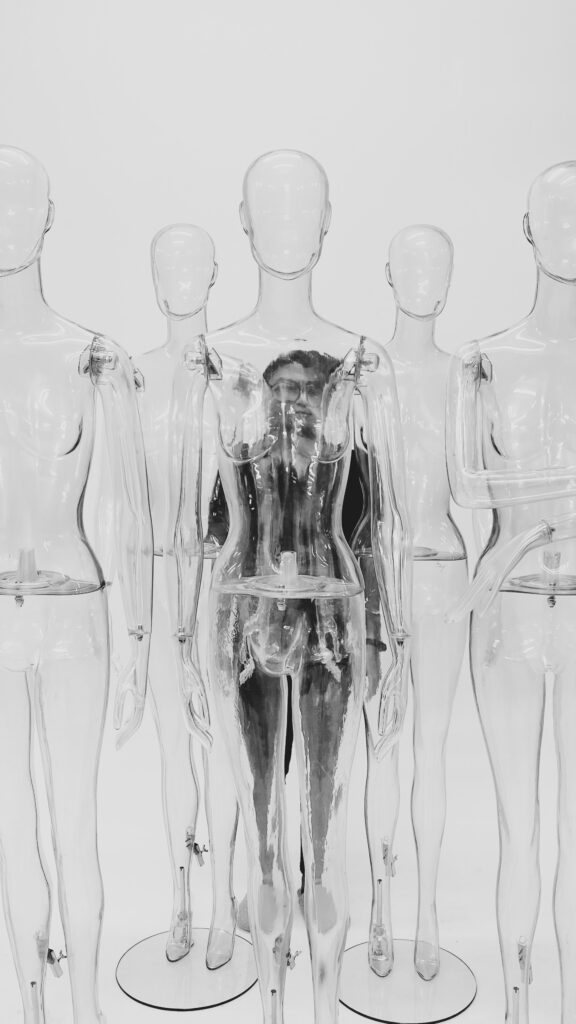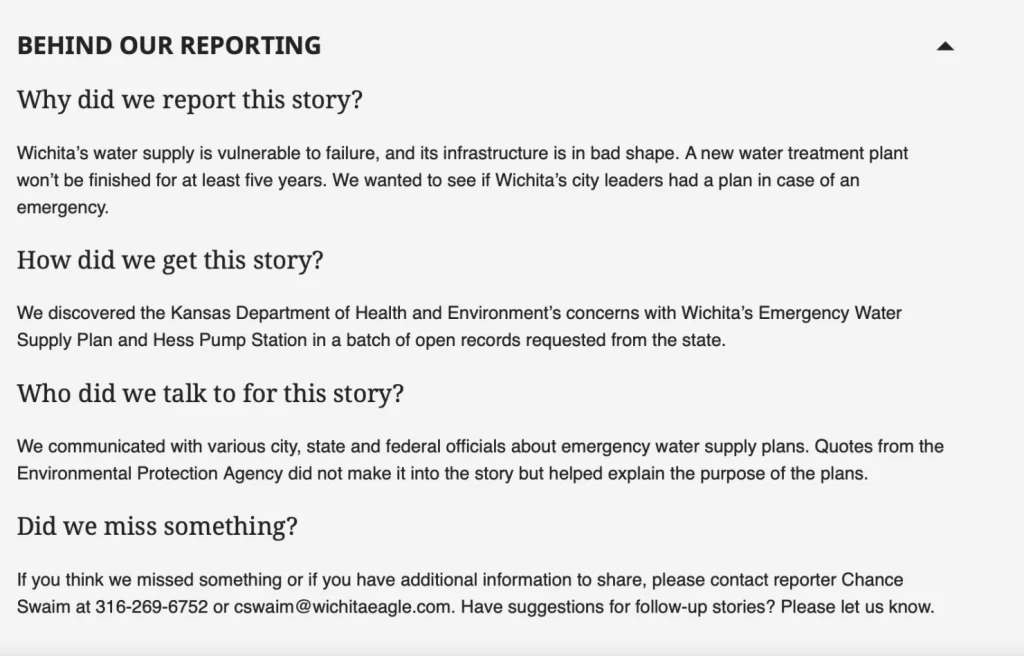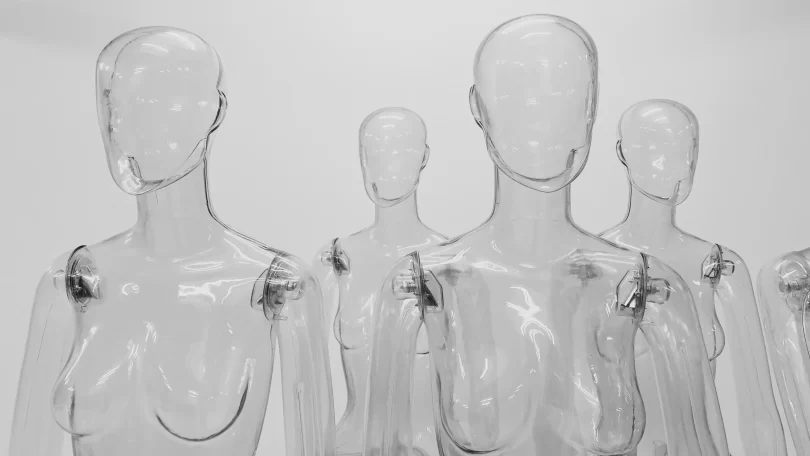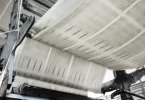We’re in an era of media mistrust. What can be done to combat it? A good place to start is a pretty non-radical idea. It’s called radical transparency.
The whole truth
The notion of radical transparency is this: present the facts, and the facts behind the facts.
According to Bill Kovach and Tom Rosenstiel, “If journalists are truth seekers, it must follow that they be honest and truthful with their audiences, too – that they be truth presenters.”
So, why are we only receiving part of the truth? What if we also had the answers to questions like:
- Why did the journalist choose to report on the story?
- Where, or from who, did the story idea come from?
- Who did the journalist interview when planning and researching for the story?
- Why did the journalist choose to interview a particular person over another?
- Did the journalist leave anything out, and if so, why?
- Did the journalist face any ethical or legal challenges in the framing of the story, and if so, what were they?
Having the answers to these sorts of questions is what radical transparency is all about. An all-encompassing, on-the-ground, in the trenches, account of the story. Journalists telling us what they know, how they know it, and most importantly, what they don’t know, will be the catalyst to cultivate consumer trust in journalism.
The Digital news report: Australia 2021 found 64 per cent of Australians are concerned about false and misleading information online. This is much higher than the global average of 56 per cent. But the problem is “many Australians lack adequate levels of media literacy to identify it”. This is where the context that radical transparency provides may help. We are not mindless audiences consuming our news in a vacuum. The context means we can better understand the facts, and most importantly, means we are more likely to trust in their accuracy.
Third wheeling
Radical transparency fosters accountability around relationships between reporters and officials. This is particularly important where officials are in positions of authority and power. If a journalist has only been presented with one account in a breaking crime news story, for example, readers need to know. If a story reports that police were wearing body cameras at the time of an incident, readers need to know whether that footage has been viewed by the journalist, and if not, why not.
This level of increased transparency may serve to dispel lazy journalism and the propensity to rely on a narrow range of “routine sources”, so journalists move away from being “passive mere processors of one-sided information or bland copy dictated by sources”.

Source unknown
Federal president of the journalists’ union, the Media Entertainment & Arts Alliance (MEAA), Marcus Strom, quite rightly labels revealing the identity of a confidential source as a “betrayal of trust”. If you burn a source, you’ll never get a good story again. Sources relying on the confidence of journalists is an integral part of the media ecosystem that holds the powerful to account.
But, how does a consumer trust a story with anonymous sources? News Literacy Matters says journalist need to convey three things to a reader – transparency about why a source has requested anonymity, a description of the source that establishes credibility without identifying them, and corroboration from an additional source.
Journalists are already obliged under the MEAA Journalist Code of Ethics to consider a source’s motivation and alternative attributable sources before accepting a request for anonymity, so why shouldn’t consumers be provided with the back story?
Not without a fight
There are some logistical challenges to the rise of radical transparency.
Firstly, the deadline driven news cycle that runs 24 hours a day, seven days a week, does not lend itself well to journalists having more work to do. Will readers accept having to wait longer for news?
Space constraints is another problem, particularly in legacy media where most funding comes from advertising.
And, how will greater transparency capture the attention span of an audience? As Maryanne Wolf, author and director of the UCLA Center for Dyslexia, Diverse Learners and Social Justice said, “We are becoming what I like to call ‘The Skimmers’ – skimmers of what we read and how we are looking at our world. We literally are using those deep reading processes that require extra time less and less.” But because being “bombarded every day, every hour” makes us more susceptible to false information, we need radical transparency to help us dissect fact from fiction.
The key is in the presentation of the behind-the-facts, facts. A University of Texas Study suggests the radical transparency material should be presented separately to the story, in a standalone box, similar to a “nutrition label”. Just like the example below.

Trial run
Despite the hurdles, radical transparency deserves a trial run. When “questioning and verifying information has always been part of a journalist’s job”, it’s only fair that consumers maintain some level of scepticism around journalists’ work. But the context and integrity radical transparency brings to the forefront of journalism will mean less scepticism and more trust.
Featured Image: Anh Tuan To via Unsplash








Considering that so much of the concern around the failing trust in journalism is the rise of misinformation/disinformation, there is a strong argument to be made that providing the insight behind the journalist’s workings may be a major step forward in restoring trust in journalism. As to your point about whether readers are willing to have a ‘lag time’ to account for the extra information being provided, there will hopefully be enough readers of the news who appreciate the rationale/aim of the radical transparency approach to justify the extra time and work that it would require journalists to put in. At the very least, by adopting the approach of radical transparency journalists would be (to an extent) disarming those who claim that journalism and journalists cannot be trusted to present the facts.
I agree wholeheartedly with the idea of radical transparency, but I wonder whether news consumers would take advantage of the extra information, and therefore whether it would be worth burdening already stretched newsrooms? Similar to the reports cited above, an ACMA study found that a shocking 51% of news consumers didn’t understand that the ABC is taxpayer funded. With results like that, and the context of scarce resources in the media, I would love to see more focus on media literacy either in education settings or in news itself. Perhaps radical transparency and media literacy can combine, with ‘nutrition label’ type cards also explaining the basics of news funding models, what constitutes appropriate research, and signs of partisanship.
Yes, yes and yes. Context is so important, especially when it comes to news and crucial information that shapes society’s values. It is also very applicable when the information is sensitive or disturbing, so people can build trust and do their own research too. It would be valuable to know why a journalist chose to write a story, but is this only something of interest to other journalists? Would the general public want to know this? I think there is value in understanding sources and the way the story was framed, in this regard. I also love the idea of the nutrition label, short and sweet, which is not too overwhelming.
Benita Miciulis’ fine opinion piece highlights many themes behind the news in terms of journalistic credibility. Outlining The University of Texas’ ‘nutrition label’ approach is possibly the greatest practical insight she brings to the debate. However, one wonders if it is a debate or just a slide into journalism’s natural evolution amid a world growing increasingly accustomed to social media platforms. I think the most philosophical solution which she touches upon has greatest potential: re-teaching an audience to read with greater depth. The education system is where skills in practical discernment in reading the news needs to be developed at all levels of the National curriculum.
I think something we’ve been all been discussing and challenging over the last six months is the idea that the 24/7 news cycle feels exhausting and overwhelming. Whether it’s radical transparency or something else, slowing down the news cycle in the age of social media feels like a necessary next step for news organisations. Slow down, strategise, contextualise, build trust. Learn how to target and tailor credible information for different audiences. Radical transparency seems like a viable solution in theory. My only question would be whether journalists could compromise their neutrality or balance if they disclose why they chose a particular story or source. I’m not sure what this might do to journalistic integrity. Otherwise, I absolutely see the value in disclosing context and transparency of source choices, given how this level of transparency could help increase trust in journalism.
It may be my academic background, but I often struggle with putting too much detail into an article, hyperlinking all my sources, correct referencing. Something that the public just doesn’t have time for. The idea of the nutrition label is fascinating, it has all that information for those people who want it but isn’t intrusive. The freedom of online news to link to other findings and reports to back up stories I also think is a powerful tool. While radical transparency might improve media trust for many people I wonder if many people are too far gone? If they already believe scientists and other academics are trying to deceive them then no amount of transparency can help.